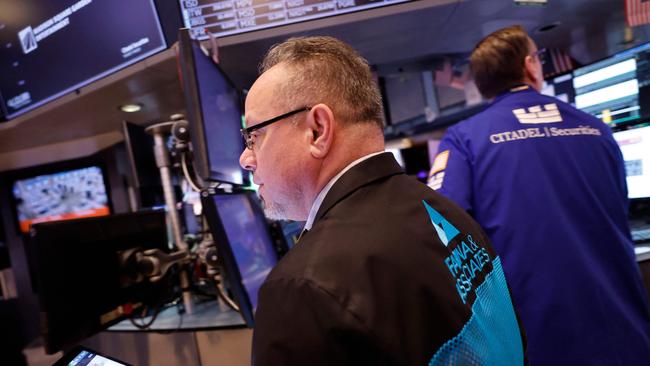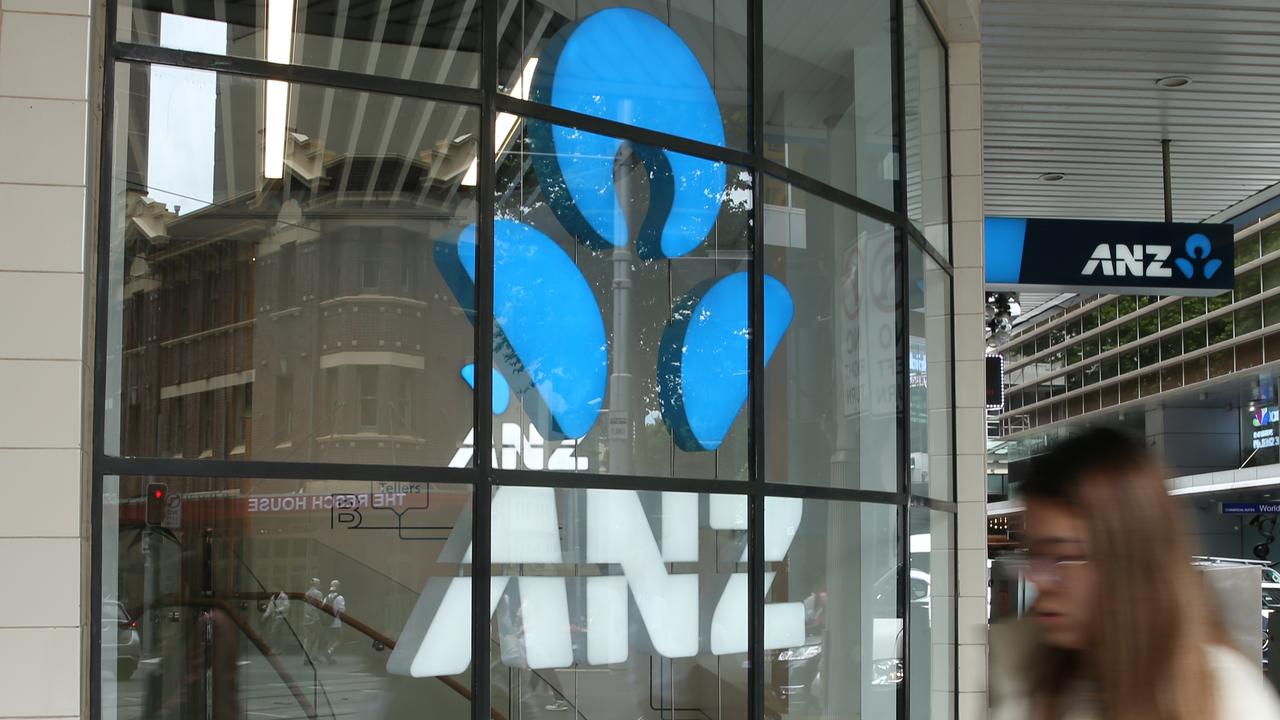The tech-fuelled surge in US stocks isn’t a bubble, says Citi
Share prices of tech giants in the US have stretched the sharemarket valuation, but Citi US equity strategist Scott Chronert says it’s not a much-feared bubble developing.

Surging tech giants have stretched the US sharemarket valuation but it’s no bubble, according to Citi.
After rising 23 per cent in the past four months as the “Magnificent Seven” surged, the S&P 500 trades on a 12-month forward PE multiple near 21 times, versus the 20-year average of 15.6 times. The trailing 12-month PE of 23 times for the index compares to a 20-year average of 17.3 times.
The Magnificent Seven tech stocks stand out with an average forward PE of 29.3 times, versus a 20-year average of 21, while the rest of the index trades on an average of 18.5 times, versus a 20-year average of 14.9 times.
But while a sharp year-to-date rise of more than 6 per cent in the S&P 500 puts increasing pressure on the fundamentals to support valuations, Citi’s S&P 500 Valuation Composite – now at its 81st percentile – is not inexpensive, but is also less extended and near the middle of its range since 2017.
“Expectations for an earnings growth inflection are clearly finding their way into the price action,” Citi US equity strategist Scott Chronert said.
“Our underlying view is that the more important focus should be on the earnings growth expectations underlying the valuation circumstance.”
The valuation picture for the big seven tech stocks is markedly different than that of the remaining 493 stocks in the index, although both are high by historical measures.
“We disagree with valuation comparisons to the tech bubble,” Mr Chronert said.
“Current multiples are well below 1999-2000 levels.”
Although comparisons with the tech bubble are “common discussion points” with clients, he said the possibility of a sustained bull market rarely came up.
His view was that the fundamental circumstance was “meaningfully different now”.
His comments come as the S&P 500 stalled before the release of US personal income expenditure inflation data at the end of the week, after hitting a record high of 5088.8 following Nvidia’s results.
After reports from 90 per cent of S&P 500 companies in recent weeks, 73 per cent have beaten earnings expectations for December quarter earnings, by an average of 6.9 per cent. In terms of the proportion of beats, it has been weaker than the September quarter, when 81 per cent of companies beat, but the positive surprise was 140 basis points higher.
While the current ramp-up in spending on generative AI infrastructure and products must translate to incremental revenue and growth drivers, it’s premature to judge the outcome.
At issue is the importance of earnings growth trajectories to support the current valuations.
Looking at PEG ratios (PE ratios divided by earnings growth rates), Mr Chronert finds that they have fallen for the big seven as well as S&P 500 growth, cyclical and defensive stocks.
Moreover, the PEG ratio of the big seven is below that of the index and the index minus the big seven.
“We don’t view PEG ratios as very predictive of forward returns, but they do provide important fundamental perspectives to PE ratios,” he said.
“Generally, they support a fundamental broadening thesis.”
Interestingly, the big seven PEG ratio is not far off of the trend from 2013 through to 2019.
S&P 500 growth, cyclicals and defensives are near levels that have been typical since 2015.
“If we consider these in the context of our accelerating earnings growth call for the S&P 500 during 2024, it’s not a big step to get more comfortable with both valuations and a broadening call,” Mr Chronert said.
In aggregate, PEG ratios are above their 20-year averages on a percentile measure, but not far off of levels common since 2015-16.
“To emphasise, it is not the valuation condition itself that is a concern to us,” Mr Chronert said.
“It’s the importance of fundamental improvements to eventually grow into the valuations.”
The past week’s rally – fuelled by red-hot results from Nvidia – has put valuations in the spotlight, but they need to be considered in the context of underlying growth expectations.
Citi’s implied free cashflow growth metrics also give some perspective. Expectations for tech have increased, but other sectors are not so stretched, which again supports a case for further broadening out of the rally.
However, Mr Chronert said the strong year-to-date rise in the S&P 500 “puts increasing pressure on fundamental growth drivers to unfold and support the price action”, adding: “Essentially, the market is paying forward for expected earnings growth.
“We remain confident in this, but need to recognise that much has quickly been priced in.
“While the index may overshoot our year-end 5100 target in the short term, it seems premature to increase the probability of our 5700 bull case scenario.”
His bull case involves a “Goldilocks” macro scenario, a PE of 22 times and $U260 index earnings projection versus his base case estimate of $US245.
“For now, we remain constructive on S&P 500 fundamentals, but prefer to buy pullbacks,” he said.




To join the conversation, please log in. Don't have an account? Register
Join the conversation, you are commenting as Logout